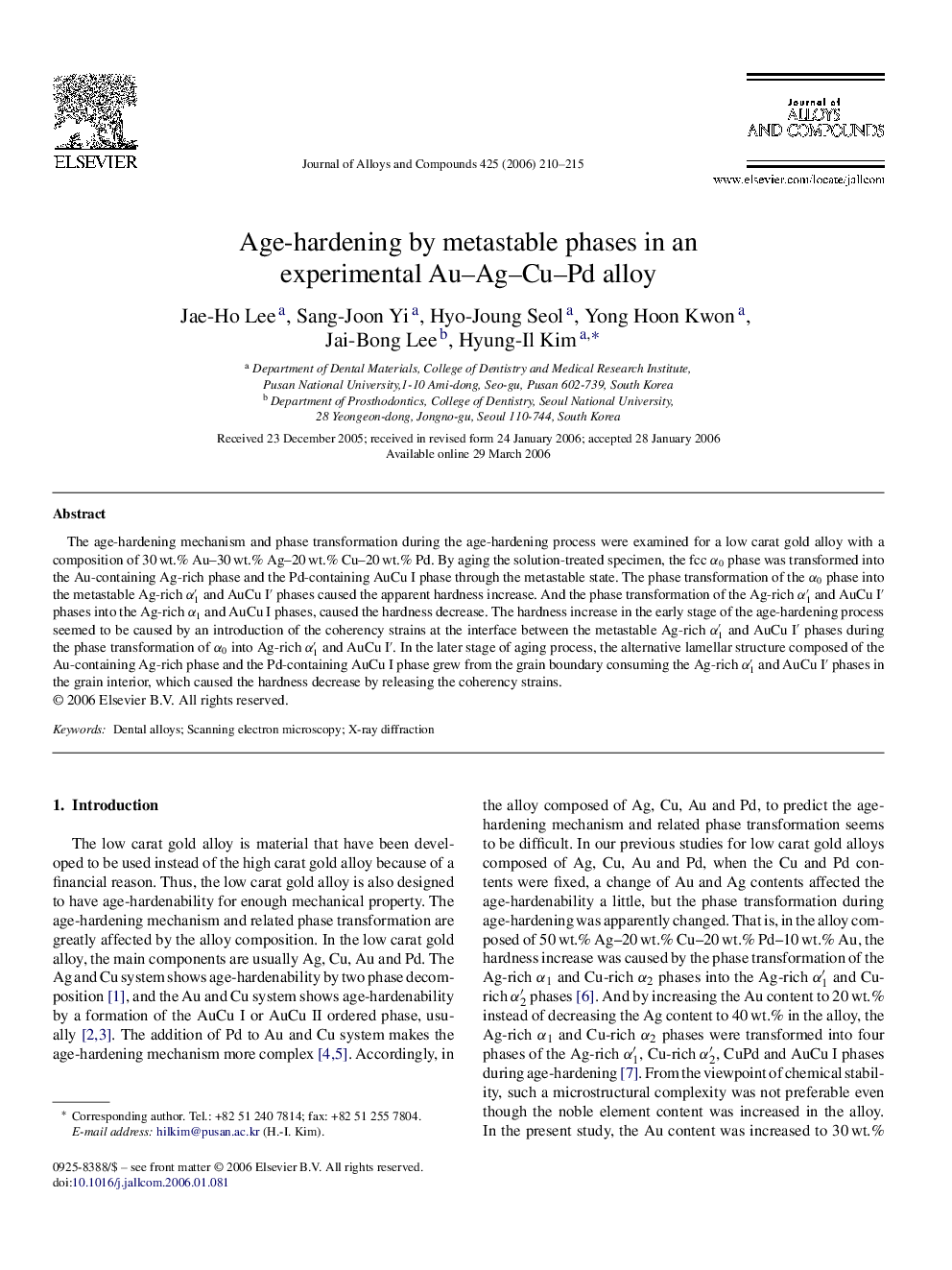| کد مقاله | کد نشریه | سال انتشار | مقاله انگلیسی | نسخه تمام متن |
|---|---|---|---|---|
| 1627159 | 1516448 | 2006 | 6 صفحه PDF | دانلود رایگان |

The age-hardening mechanism and phase transformation during the age-hardening process were examined for a low carat gold alloy with a composition of 30 wt.% Au–30 wt.% Ag–20 wt.% Cu–20 wt.% Pd. By aging the solution-treated specimen, the fcc α0 phase was transformed into the Au-containing Ag-rich phase and the Pd-containing AuCu I phase through the metastable state. The phase transformation of the α0 phase into the metastable Ag-rich α′1α′1 and AuCu I′ phases caused the apparent hardness increase. And the phase transformation of the Ag-rich α′1α′1 and AuCu I′ phases into the Ag-rich α1 and AuCu I phases, caused the hardness decrease. The hardness increase in the early stage of the age-hardening process seemed to be caused by an introduction of the coherency strains at the interface between the metastable Ag-rich α′1α′1 and AuCu I′ phases during the phase transformation of α0 into Ag-rich α′1α′1 and AuCu I′. In the later stage of aging process, the alternative lamellar structure composed of the Au-containing Ag-rich phase and the Pd-containing AuCu I phase grew from the grain boundary consuming the Ag-rich α′1α′1 and AuCu I′ phases in the grain interior, which caused the hardness decrease by releasing the coherency strains.
Journal: Journal of Alloys and Compounds - Volume 425, Issues 1–2, 30 November 2006, Pages 210–215